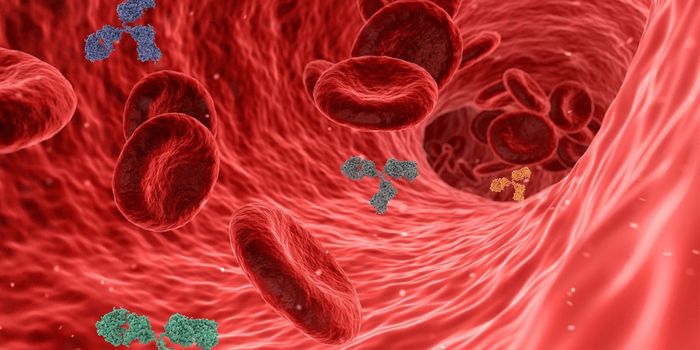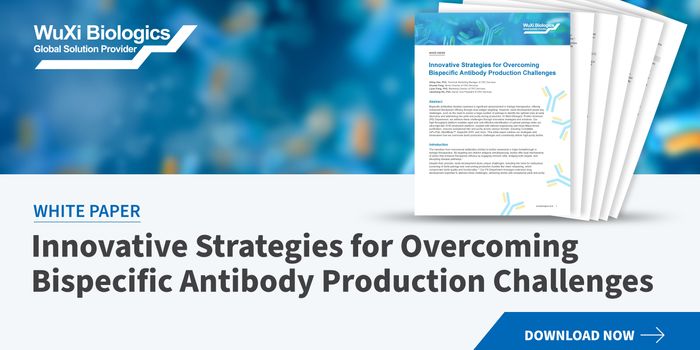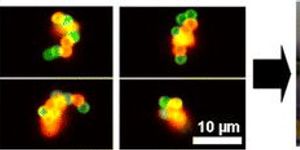
Steven A. Porcelli, MD, is the new chair of the Department of Microbiology & Immunology, Albert Einstein College of Medicine of Yeshiva University, Bronx, NY. He is the Murray and Evelyne Weinstock Professor in the department that he chairs, and also holds a secondary appointment as a professor in the Department of Medicine. Porcelli is working with other scientists at Einstein to create a more powerful TB vaccine. Their research has paved the way for a new, live attenuated vaccine to replace the relatively ineffective vaccine called BCG, which has been in use for nearly a century. Together with his collaborators, he is attempting to fashion new vaccine candidates by directly modifying the Mycobacterium tuberculosis organism to eliminate its virulence while simultaneously increasing its ability to stimulate protective immune responses. They are also working on introducing antigens from HIV into these modified M. tuberculosis organisms, thus potentially creating a vaccine to induce protection against both TB and HIV with a single shot.
Judy O'Rourke: Can you briefly discuss the progress you and your colleagues are making in this endeavor?
Steven A. Porcelli, MD: We have made great progress in generating new strains of M. tuberculosis that can be easily grown in the lab, but cannot grow when they are introduced into animals. This has been done by deleting specific genes from the bacterial genome that are needed to synthesize crucial metabolites, such as certain amino acids or vitamins. Such bacteria, which are called auxotrophs, can grow fine in cultures that are supplied with very high amounts of the missing metabolites, but drop dead very quickly when injected into animals. Nevertheless, they persist long enough in the body to stimulate robust immune responses. We have also found ways to make these immune responses even stronger by deleting other genes and by introducing stimulatory chemicals called adjuvants.
JO: How safe is the vaccine?
SP: Ultimately, that must be determined by direct testing in people. However, we have strong reasons to believe that our live organism vaccines will be extremely safe, even safer than the existing BCG vaccine. In laboratory studies, we have given very high doses of our auxotrophic strains of M. tuberculosis to mice with severe immune defects, such as complete absence of functional T and B cells. Even in these severely immunocompromised animals, our attenuated vaccine strains are cleared from the animals' bodies without producing signs of illness. In addition, by introducing two separate mutations that create separate metabolic defects in the bacteria, we can be virtually certain that the strains cannot revert to a virulent state with any significant frequency. Of course, any new vaccine can be associated with unanticipated and unpredictable adverse effects, so we will need to proceed systematically and cautiously as we move these strains closer to studies in people.
JO: What is your most significant (or recent) discovery about how the immune system reacts to tuberculosis infection?
SP: Our studies have led us to the conclusion that M. tuberculosis has a very sophisticated program of controlling and manipulating the host immune response. Its approach is not simply one of "stealth," which would mean effectively hiding from the immune system. Instead, it seems to actually promote recognition of some of its antigens, while keeping others concealed. This has led us to the idea that many of the most strongly recognized antigens of M. tuberculosis are actually "decoys" that are used to distract the immune system and prevent responses against other targets that represent true points of vulnerability of the bacterium. We recently identified one gene in M. tuberculosis which seems to play a significant role in this immune distraction. This gene is of major interest to us because it belongs to a very large family of genes in the bacterium encoding a group of proteins known as the PE_PGRS protein family. We suspect that many of the proteins in this family play major roles in coordinating the program of immune evasion used by this bacterium. We are just at the beginning of what I'm sure will be a major effort by many labs to unravel the complex interactions of the PE_PGRS proteins with the host immune system, but I suspect that this may ultimately hold the key to understanding how to guide the immune system toward controlling tuberculosis.
JO: What are your concerns about the disease spreading?
SP: I have serious concerns about this. Tuberculosis was nearly eliminated as a major public health problem in wealthy developed countries by public health measures, screening programs, and highly supervised treatment. With the global economy continuing to struggle, we are likely to see reductions in public health infrastructure. This, along with worsening general living conditions, overcrowding, poor nutrition, and mass immigration may lead to a resurgence of tuberculosis in many places that have had little serious threat from it for several decades. In addition, tuberculosis has continued to rage unabated in less developed areas, particularly sub-Saharan Africa. The sporadic and often prematurely interrupted use of anti-tuberculosis drugs in those regions has led to the emergence of extraordinarily drug resistant strains. If these strains begin to spread at an increasing rate to other dense population centers, we may have a severe problem that will severely test even the resources of the most-advanced nations.
Porcelli has served for the past decade as scientific director of Einstein's Flow Cytometry Core facility and of FACS (fluorescence-activated cell sorting) resources for the Einstein-Montefiore Center for AIDS Research.
JO: Can you discuss your efforts to develop vaccines to block HIV infection?
SP: One of our dreams has been to create a single vaccine that could provide protection against both tuberculosis and HIV, as these two pathogens frequently are endemic in the same populations. Our approach to this has been to use live mycobacterial vaccine strains as vectors for the expression and delivery of selected protein antigens of HIV. We have developed methods to engineer the stable expression of HIV antigens such as the viral envelope glycoprotein of HIV in recombinant mycobacteria. Our hope is that these engineered mycobacteria will simultaneously stimulate significant cellular immunity against both M. tuberculosis and HIV. This is unlikely to yield a stand-alone vaccine, but might provide a simple and inexpensive approach to priming cellular immunity for subsequent boosting by other types of vaccines currently under development, particularly in the case of HIV.
Image: Scanning electron micrograph of HIV-1 budding from cultured lymphocyte. [Photo credit: Photo Credit: Cynthia Goldsmith, Centers for Disease Control and Prevention]
 Steven A. Porcelli, MD, is the new chair of the Department of Microbiology & Immunology, Albert Einstein College of Medicine of Yeshiva University, Bronx, NY. He is the Murray and Evelyne Weinstock Professor in the department that he chairs, and also holds a secondary appointment as a professor in the Department of Medicine. Porcelli is working with other scientists at Einstein to create a more powerful TB vaccine. Their research has paved the way for a new, live attenuated vaccine to replace the relatively ineffective vaccine called BCG, which has been in use for nearly a century. Together with his collaborators, he is attempting to fashion new vaccine candidates by directly modifying the Mycobacterium tuberculosis organism to eliminate its virulence while simultaneously increasing its ability to stimulate protective immune responses. They are also working on introducing antigens from HIV into these modified M. tuberculosis organisms, thus potentially creating a vaccine to induce protection against both TB and HIV with a single shot.
Steven A. Porcelli, MD, is the new chair of the Department of Microbiology & Immunology, Albert Einstein College of Medicine of Yeshiva University, Bronx, NY. He is the Murray and Evelyne Weinstock Professor in the department that he chairs, and also holds a secondary appointment as a professor in the Department of Medicine. Porcelli is working with other scientists at Einstein to create a more powerful TB vaccine. Their research has paved the way for a new, live attenuated vaccine to replace the relatively ineffective vaccine called BCG, which has been in use for nearly a century. Together with his collaborators, he is attempting to fashion new vaccine candidates by directly modifying the Mycobacterium tuberculosis organism to eliminate its virulence while simultaneously increasing its ability to stimulate protective immune responses. They are also working on introducing antigens from HIV into these modified M. tuberculosis organisms, thus potentially creating a vaccine to induce protection against both TB and HIV with a single shot.







